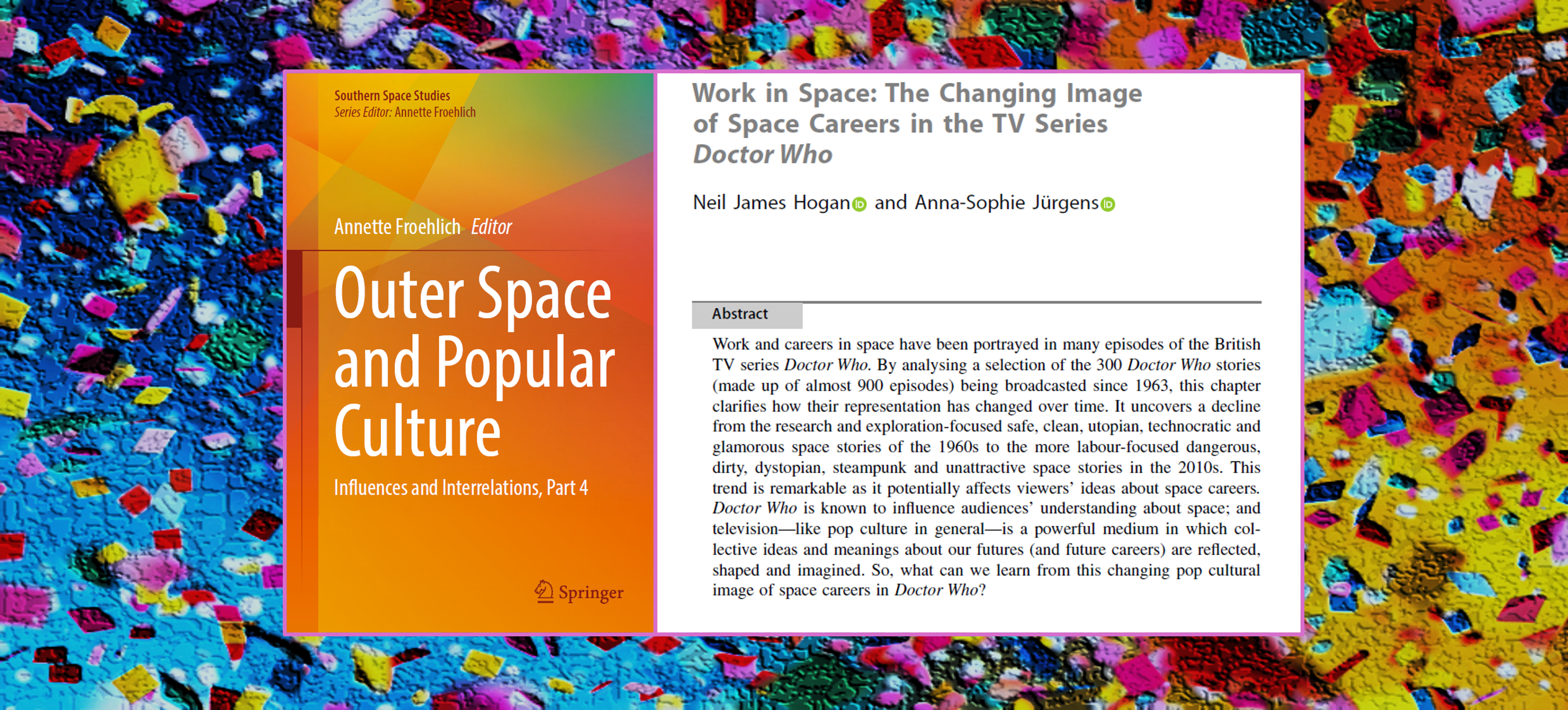Work and careers in space have been portrayed in many episodes of the British TV series Doctor Who. By analysing a selection of the 300 Doctor Who stories (made up of almost 900 episodes) being broadcasted since 1963, this chapter clarifies how their representation has changed over time. It uncovers a decline from the research and exploration-focused safe, clean, utopian, technocratic and glamorous space stories of the 1960s to the more labour-focused dangerous, dirty, dystopian, steampunk and unattractive space stories in the 2010s. This trend is remarkable as it potentially affects viewers’ ideas about space careers. Doctor Who is known to influence audiences’ understanding about space; and television—like pop culture in general—is a powerful medium in which collective ideas and meanings about our futures (and future careers) are reflected, shaped and imagined. So, what can we learn from this changing pop cultural image of space careers in Doctor Who?
A book chapter project led by Neil J. Hogan. 😎
Find out more in the edited collection “Outer Space and Pop Culture” Vol 4!
Following on from the highly acclaimed Parts 1 to 3, this book provides detailed insights into how space and popular culture intersect across a broad spectrum of examples, including cinema, music, art, arcade games, cartoons, comics, and advertisements. This is a pertinent topic since the use of space themes differs in different cultural contexts, and these themes can be used to explore various aspects of the human condition and provide a context for social commentary on politically sensitive issues. With the use of space imagery evolving over the past sixty years of the space age, this is a topic ripe for in-depth exploration. The book also discusses the contrasting visions of space from the late nineteenth and early twentieth centuries and the reality of today and analyzes space vehicles and habitats in popular depictions of space from an engineering perspective, exploring how many of those ideas have actually been implemented in practice and why or why not (a case of life imitating art and vice versa). As such, it covers a wide array of relevant and timely topics examining intersections between space and popular culture and offering accounts of space and its effect on culture, language, and storytelling from the southern regions of the world.


